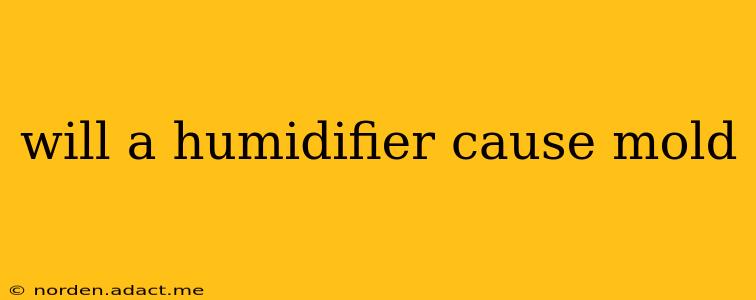Will a Humidifier Cause Mold? Understanding the Risks and Prevention
Humidifiers are fantastic for combating dry air, especially during harsh winters or in arid climates. They can alleviate dry skin, coughs, and other discomforts. However, a common concern is whether using a humidifier increases the risk of mold growth in your home. The short answer is: yes, it can, but proper maintenance and usage significantly mitigate this risk.
Let's delve deeper into this concern and explore ways to prevent mold growth while enjoying the benefits of a humidifier.
How Does a Humidifier Contribute to Mold Growth?
Mold thrives in damp, dark environments. A humidifier increases the humidity in a room, creating a more favorable environment for mold spores to germinate and grow. If moisture accumulates on surfaces (walls, furniture, etc.), or if the humidifier itself becomes contaminated, mold can easily develop. Essentially, the humidifier isn't directly causing the mold, but it's creating a more conducive environment for it to flourish.
What Types of Humidifiers are More Prone to Mold Growth?
Different types of humidifiers pose varying levels of mold risk:
-
Evaporative Humidifiers: These are generally considered safer than other types, as they don't create a reservoir of standing water. However, mineral deposits can still build up and provide a breeding ground for mold if not cleaned regularly.
-
Ultrasonic Humidifiers: These are popular for their quiet operation but can be more prone to mold if not cleaned frequently. The vibration of the ultrasonic transducer can aerosolize small amounts of water containing any bacteria or mold already present in the water reservoir.
-
Steam Vaporizers: These humidifiers boil water, creating steam. While this process kills most bacteria, they are generally less energy efficient and require more careful handling.
What are the Signs of Mold in My Humidifier?
Regular inspection is key. Look out for these signs:
- Visible mold: Check the water reservoir, filter (if applicable), and the humidifier's exterior for any visible fuzzy growth or discoloration.
- Musty odor: A musty smell emanating from the humidifier is a strong indication of mold growth.
- Water stains: Persistent water stains around the humidifier suggest leakage or condensation that could encourage mold.
How Can I Prevent Mold Growth When Using a Humidifier?
Proper maintenance is crucial:
- Clean your humidifier regularly: Follow the manufacturer's instructions for cleaning and descaling. This usually involves emptying and cleaning the reservoir daily or every few days, depending on usage. Use a mild detergent and water, and rinse thoroughly.
- Use distilled or filtered water: Tap water contains minerals that can leave deposits and contribute to mold growth. Distilled or filtered water minimizes this risk.
- Keep the humidifier clean and dry when not in use: Completely dry the humidifier after each use and store it in a clean, dry place.
- Ensure proper ventilation: Make sure the room is well-ventilated to prevent excessive humidity buildup.
- Monitor humidity levels: Use a hygrometer to monitor the humidity levels in your home and avoid over-humidification. The ideal humidity level is generally between 30% and 50%.
What if I Find Mold in My Humidifier?
If you discover mold, clean it thoroughly following the manufacturer's instructions. If the mold is extensive or you're unable to remove it completely, it's best to replace the humidifier. Disposing of a moldy humidifier properly is essential to prevent further mold spread.
By following these preventive measures, you can significantly reduce the risk of mold growth while enjoying the benefits of a humidifier in your home. Remember, a clean humidifier is a healthy humidifier!
